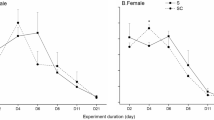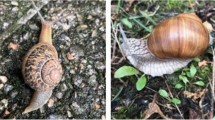Abstract
I DO not know if the observation which is recorded below is new, but it is certainly new to me, and seems to be sufficiently interesting for publication. In the autumn of 1884 I noticed that the whitening which had been painted on some greenhouse glass in a garden at Reading, had evidently been eaten off by a large Gasteropod. The whitening was almost entirely removed from one pane, and partially from many others. The outlines of the parts which had been eaten were quite unmistakable, exactly resembling on a large scale the well-known traces left by freshwater snails on the conferva-covered glass of an aquarium. I did not find the snails at work, but the gardener assured me that he had seen them upon the glass, and that they were the common garden snails (Helix aspersa). Considering the entirely characteristic appearance of the marks, I think it may be taken as proved that the whitening was eaten by some large Gasteropod, and almost certainly by Helix aspersa. It is exceedingly probable that other forms of calcium carbonate (especially limestone rocks) are eaten in the same way, but the conditions of this particular form of the substance—spread out as it was in a thin film on a transparent layer—rendered the fact that it had been eaten especially conspicuous. As to the importance of calcium carbonate to the snail, it must be remembered that there is not only the necessity for growth of the shell in the young animal, and its repair in the adult; but there is also a regular periodical need in the latter for material to supply the place of the calcareous dart (spicula amoris), which is discharged before coitus, and is believed to act as an excitant in the sexual relations of these animals. The membrane (hibernaculum) which closes the mouth of the shell in winter is also to some extent calcareous.
This is a preview of subscription content, access via your institution
Access options
Subscribe to this journal
Receive 51 print issues and online access
$199.00 per year
only $3.90 per issue
Buy this article
- Purchase on SpringerLink
- Instant access to full article PDF
Prices may be subject to local taxes which are calculated during checkout
Similar content being viewed by others
Rights and permissions
About this article
Cite this article
POULTON, E. Snails Eating Whitening. Nature 33, 176 (1885). https://doi.org/10.1038/033176e0
Issue date:
DOI: https://doi.org/10.1038/033176e0
This article is cited by
-
Untersuchungen �ber die funktion der radula einiger schnecken
Zeitschrift f�r Morphologie und �kologie der Tiere (1941)



